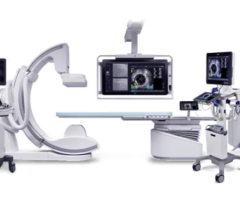January 25, 2011 – The cost to treat heart disease in the United States will triple by 2030, according to a policy statement published in Circulation: Journal of the American Heart Association.
"Despite the successes in reducing and treating heart disease over the last half century, even if we just maintain our current rates, we will have an enormous financial burden on top of the disease itself," said Paul Heidenreich, M.D., chair of the American Heart Association expert panel issuing the statement.
The panel estimated future medical costs based on the current rates of disease and used census data to adjust for anticipated population shifts in age and race. The rigorous methods they devised didn't double count costs for patients with multiple heart conditions.
"These estimates don't assume that we will continue to make new discoveries to reduce heart disease," Heidenreich said. "If our ability to prevent and treat heart disease stays where we are right now, costs will triple in 20 years just through demographic changes in the population."
The panel said effective prevention strategies are needed to limit the growing burden of cardiovascular disease – the leading cause of death in the United States that accounts for 17 percent of overall national health expenditures.
"Unhealthy behaviors and unhealthy environments have contributed to a tidal wave of risk factors among many Americans," said Nancy Brown, American Heart Association CEO. "Early intervention and evidence-based public policies are absolute musts to significantly reduce alarming rates of obesity, hypertension, tobacco use and cholesterol levels."
Currently, one in three Americans (36.9 percent) have some form of heart disease, including high blood pressure, coronary heart disease, heart failure, stroke and other conditions. By 2030, approximately 116 million people in the United States (40.5 percent) will have some form of cardiovascular disease, the panel said. The largest increases are anticipated in stroke (up 24.9 percent) and heart failure (up 25 percent).
Between 2010-30, the cost of medical care for heart disease (in 2008 dollar values) will rise from $273 billion to $818 billion, the authors predicted.
"We were all surprised at the remarkable increase in costs that are expected in the next two decades," Heidenreich said. "We need to continue to invest resources in the prevention of disease, the treatment of risk factors and early treatment of existing disease to reduce that burden."
Heart disease will also cost the nation billions more in lost productivity, increasing from an estimated $172 billion in 2010 to $276 billion in 2030. Productivity losses include days missed from home or work tasks because of illness and potential lost earnings due to premature death.
For more information: www.americanheart.org


 December 20, 2023
December 20, 2023 








